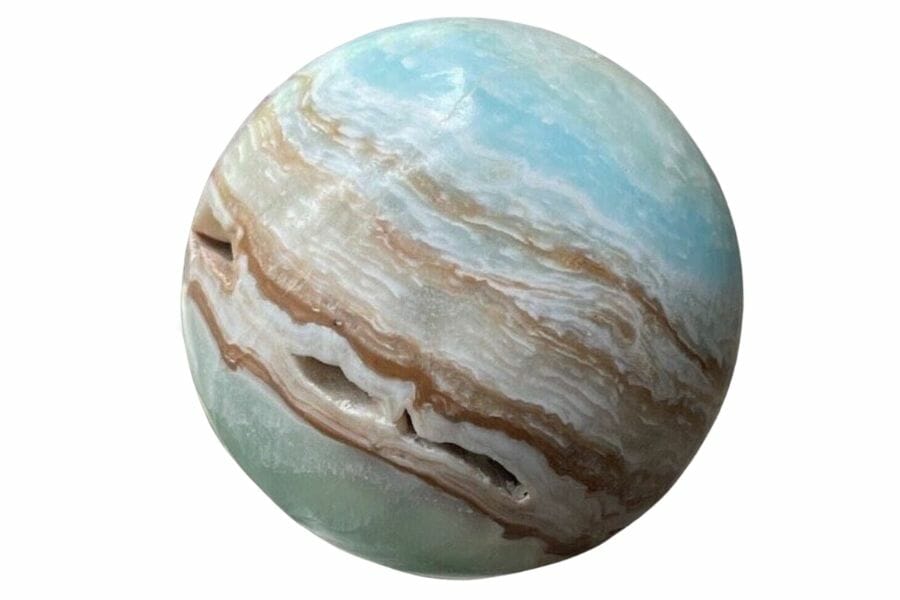Halite and calcite are two minerals that often spark curiosity. While both might look similar at first glance, they have many intriguing differences and similarities that make them stand out in the mineral world.
Comparing halite vs calcite can provide a deeper insight into the world of geology, from their chemical composition to their physical appearance.
Whether you’re a rock collector, a student of geology, or just someone interested in the earth’s treasures, the journey through these two minerals promises to be rich in information and surprises.
Understanding these differences and similarities might even help you identify them the next time you come across a beautiful crystal, be it in a store, a museum, or out in nature.
Halite vs Calcite – The Major Differences
Halite and calcite are two interesting minerals that may look similar but have some cool differences. Both are found in nature and have unique properties that make them special. Let’s dive into what sets them apart from each other!
Colors – Calcite tends to come in white and brown shades
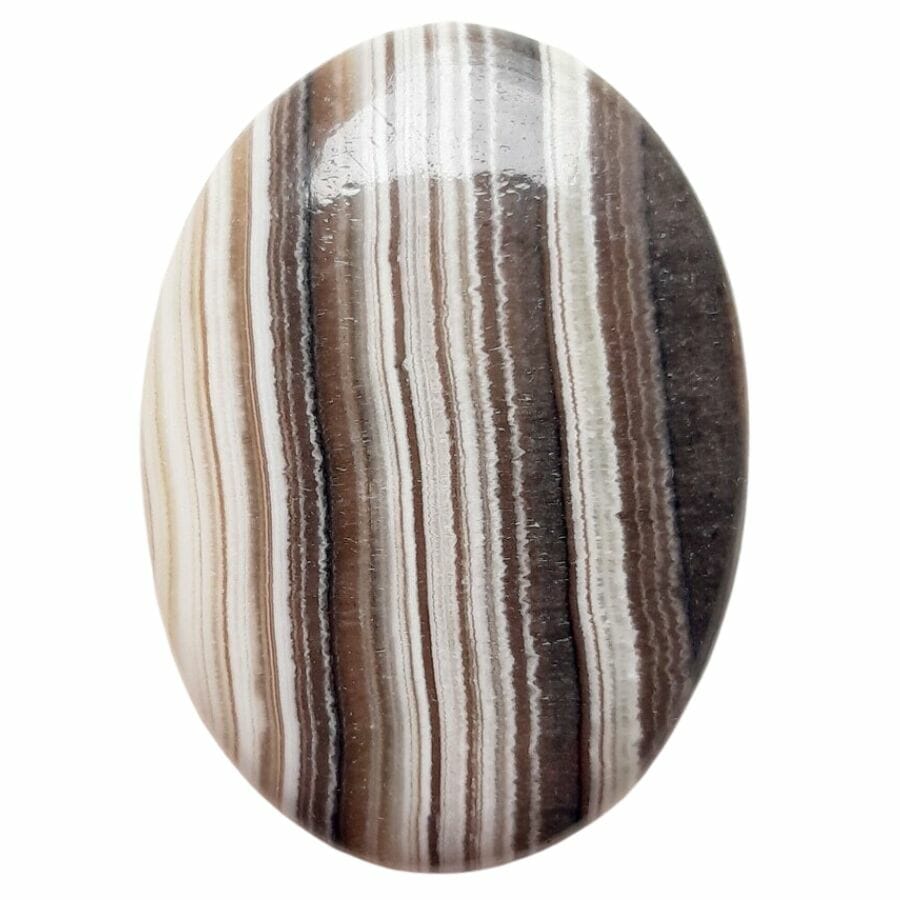
Halite, when pure, presents itself as colorless or white, much like table salt which is a common form of halite that many people are familiar with. However, nature has its ways of adding a splash of color to minerals through impurities.
These impurities can cause halite to adopt various shades. It’s not uncommon to find halite in colors like yellow, gray, or even black. Other shades like brown and red also make appearances, often giving the halite an earthy and rich hue.
On the flip side, calcite’s color story is a bit different. While it too can be colorless or take on a creamy white shade, calcite often leans more towards the neutral spectrum.
Now and then, it can come in red, orange, yellow, blue, and green.
Brownish shades are not uncommon in calcite, giving it a warmth that might remind someone of a cozy, rustic setting.
Unlike halite, which can be seen in more vibrant variations due to its impurities, calcite tends to remain more subtle and muted in its color variations.
This difference in color profiles can be a handy clue when trying to distinguish between the two minerals.
Hardness – Halite is softer and can be scratched by a fingernail
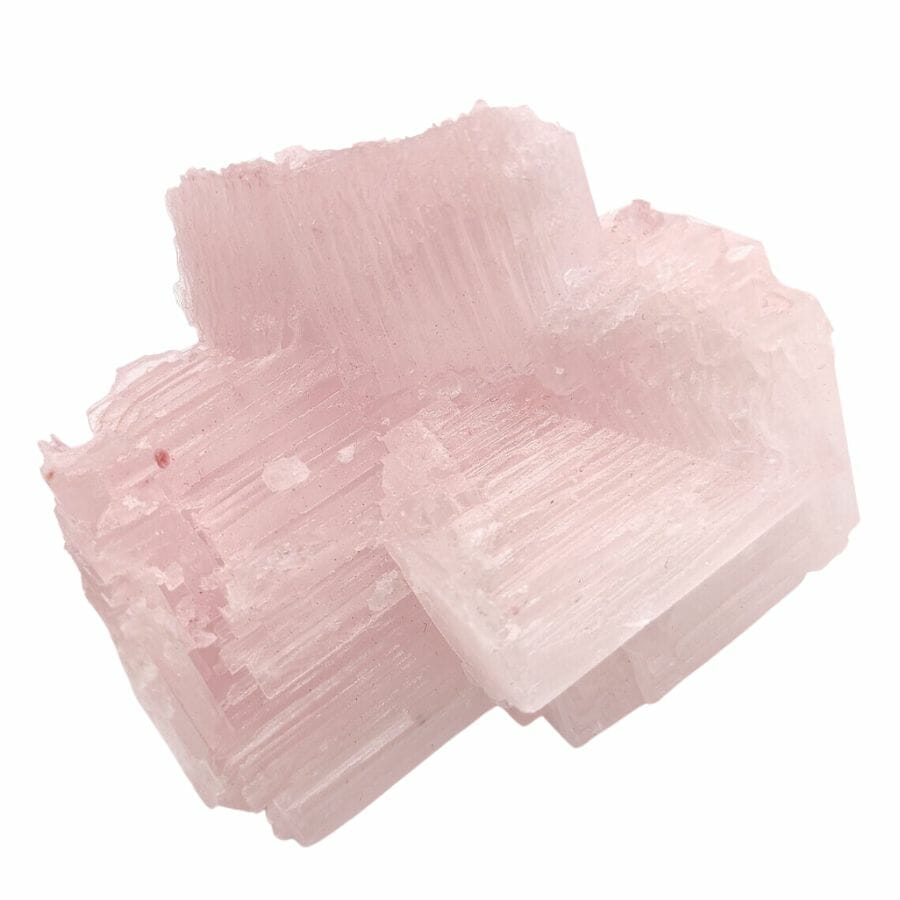
One of the key attributes used by geologists to identify minerals is hardness. This is a great way to differentiate calcite vs halite.
The Mohs scale, a standard for gauging mineral hardness, ranges from 1 (softest) to 10 (hardest). Both halite and calcite have their places within the scale, but they differ slightly.
Halite, which many recognize as common table salt, has a Mohs hardness ranging from 2.0 to 2.5. This means that it’s relatively soft. If you were to try scratching it with your fingernail, you’ll be able to leave a mark.
On the other hand, calcite has a Mohs hardness of 3. Though still on the softer end of the scale, it’s definitely harder than halite. A fingernail, which typically has a hardness of 2.5, might not scratch calcite as easily.
These differences in hardness can help distinguish between the two minerals, especially in instances where other characteristics might seem similar.
Luster – Calcite has a glassy or pearly luster
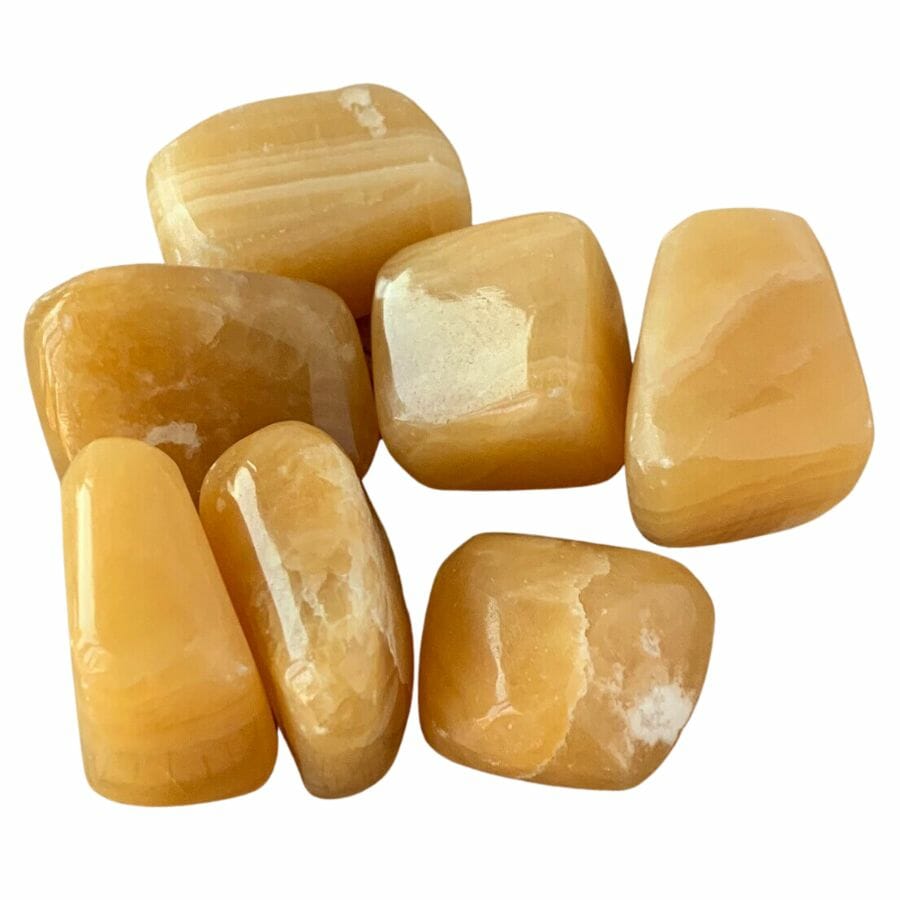
Luster is one of those properties in minerals that catches the eye and makes one appreciate the beauty of nature. It refers to the way a mineral reflects light from its surface.
In the case of halite, the luster is distinctly vitreous, which means it has a glassy appearance. Think of how light plays off a freshly cleaned window pane.
That’s the kind of sheen halite brings to the table, making it stand out with a certain clarity and brightness.
Calcite, while sharing some similarities with halite in terms of its vitreous luster, adds a twist. Especially on cleavage surfaces, which are the planes where the mineral naturally breaks, calcite can show a pearly luster.
This pearly aspect gives it a soft, iridescent shine, reminiscent of the inside of a seashell or the glow of moonlight on water.
It’s this mix of the glass-like and the pearly shimmer that sets calcite apart from halite, adding depth and nuance to its appearance.
This subtle difference in luster can be a helpful hint when trying to identify these two minerals.
Crystal structure – Halite has naturally cubic crystals
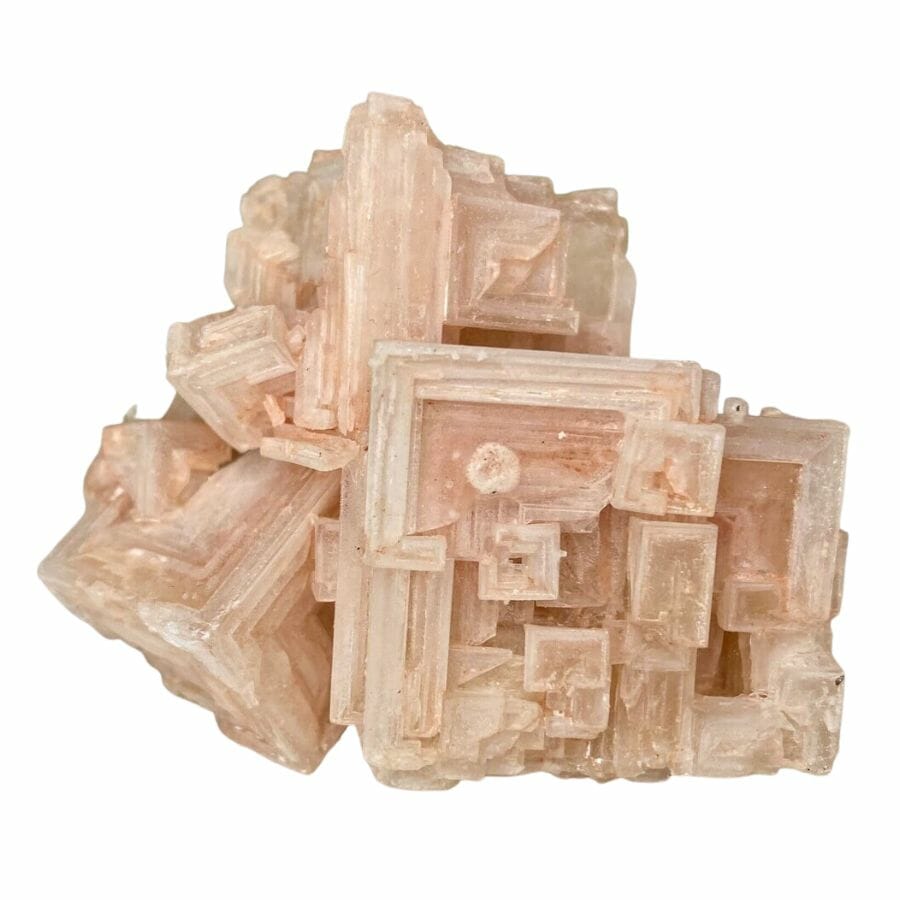
Minerals are not just defined by their color or hardness. Their crystal structures offer another intriguing way to tell them apart. The respective crystal structures of halite and calcite are one of the major points of difference.
Halite is known for its cubic crystal system. This means that when it forms naturally, it often grows into the shape of cubes. Imagine tiny, perfectly shaped blocks with all sides equal.
This structured, boxy appearance is a hallmark of halite, making it easily identifiable to those familiar with its crystalline patterns.
In contrast, calcite takes on a different geometric beauty. It crystallizes in the trigonal system. This leads calcite to form crystals that are rhombus-shaped, often looking like slanted parallelograms.
These crystals, commonly known as rhombohedra, have angles that aren’t right angles, unlike the perfect 90-degree angles found in halite cubes.
Recognizing these distinct structural shapes can be an easy and fascinating way to distinguish between halite and calcite in mineral collections or out in nature.
Cleavage – Calcite breaks into rhombus-like shapes
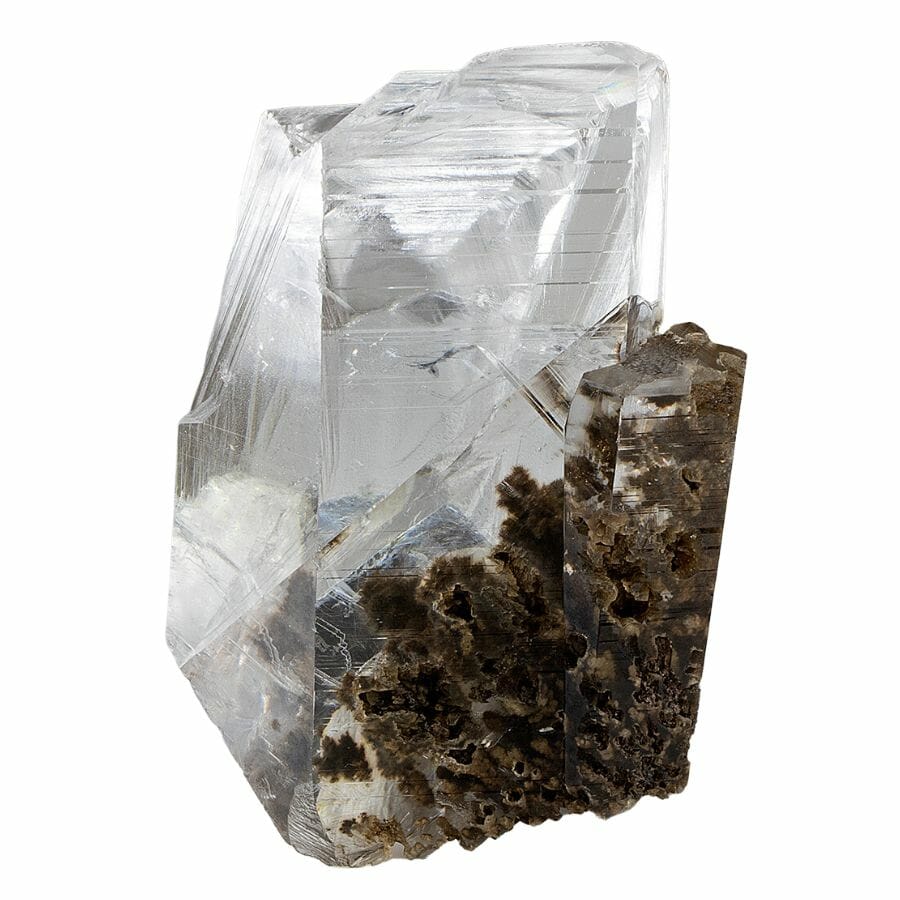
Cleavage in minerals isn’t about how they look on the outside, but about how they break. Every mineral has its own preferred way of breaking, and this characteristic can tell a lot about what the mineral is.
Halite, for example, breaks in a very specific way. It has perfect cubic cleavage in three directions. This means that if someone were to break a chunk of halite, it would likely split along straight lines, forming cubes or boxy shapes.
Just like a chocolate bar breaks into neat little squares, halite likes to break into neat cubes.
Calcite, though, has its own style. It breaks with perfect rhombohedral cleavage in three directions. Instead of breaking into square boxes, calcite breaks into slanted, three-sided shapes called rhombohedra.
It’s a bit like a slanted box, not quite a perfect cube.
So, when looking at broken pieces of these minerals, the difference in cleavage becomes quite clear. While halite will show off its neat, box-like breaks, calcite will proudly display its unique, slanted rhombohedral shapes.
Chemical composition – Halite is basically table salt
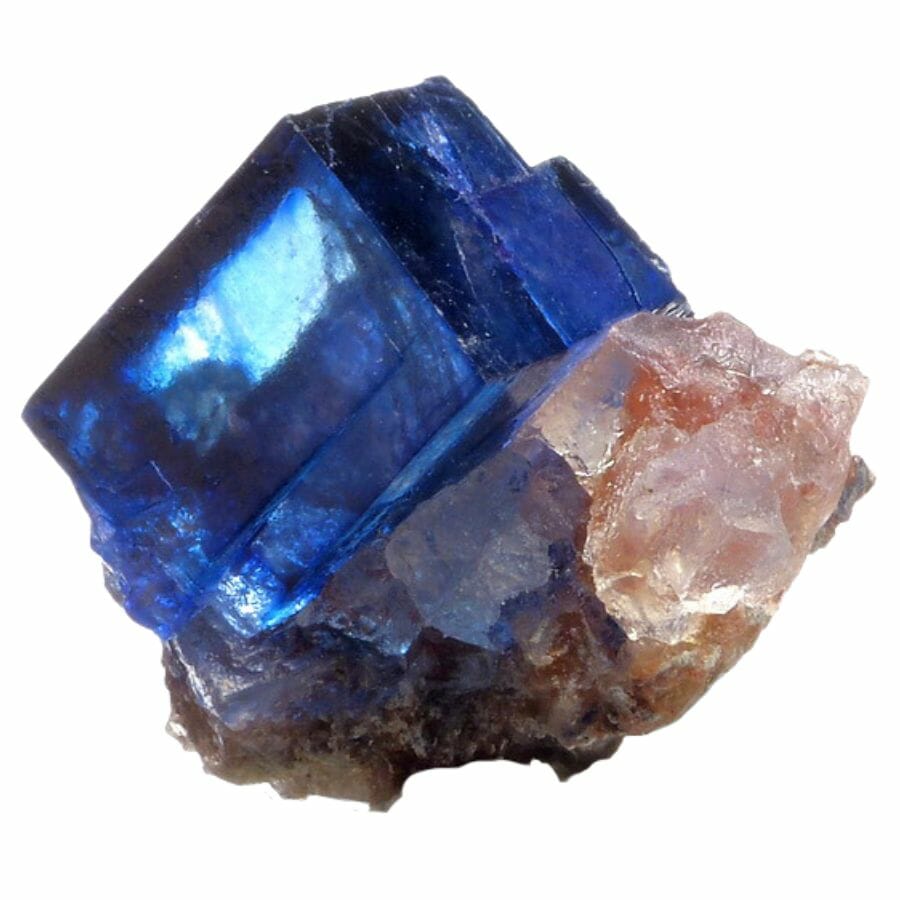
At the heart of every mineral lies its chemical composition, which is like a recipe that nature follows to make it. It defines not only the mineral’s identity but also many of its properties.
Halite, for instance, has a simple yet essential composition: NaCl. This stands for sodium chloride. If it sounds familiar, that’s because it’s the same stuff that’s sprinkled on fries or added to dishes to bring out the flavor.
It’s table salt! Nature makes halite using equal parts of sodium and chloride, creating the familiar salt crystals many are used to seeing in their kitchen.
On the other side is calcite, which has a bit more going on in its formula. Its chemical composition is CaCO₃, representing calcium carbonate. This compound is found in many places in nature, from seashells to limestone rocks.
The calcium carbonate in calcite gives it not only its unique properties but also its role in forming many of the earth’s interesting landscape features, like caves and stalactites.
So, when talking about halite and calcite, it’s like comparing table salt to the stuff that makes up seashells. Both are incredible in their own right, and their chemical compositions play a huge part in their stories.
Fluorescence – Calcite glows different colors under UV light
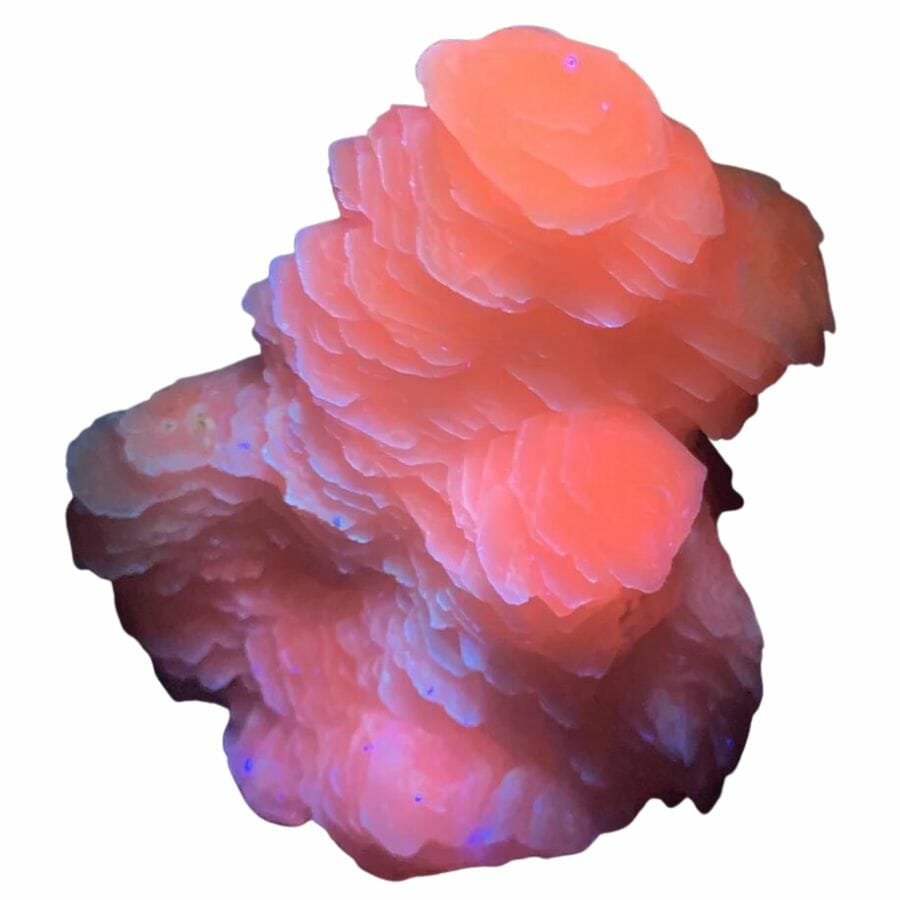
When minerals are put under ultraviolet (UV) light, some of them have a neat party trick: they glow in the dark! This glowing effect is called fluorescence, and it’s a way certain minerals react to UV light.
Now, not all minerals do this, but both halite and calcite are among the show-stoppers.
Halite, when placed under short-wave UV light, doesn’t just glow; it puts on a vibrant show. It lights up with a bright orange color.
Imagine a piece of rock suddenly lighting up like a fiery ember in the dark. That’s halite showing off its fluorescent side.
Calcite, however, is a bit of a chameleon when it comes to fluorescence. Depending on the type of calcite and the conditions it formed under, it can glow different colors under UV light.
Some calcite will light up a brilliant red, while others might take on a blue or yellow hue.
The best part is that calcite can glow under either short-wave or long-wave UV, making its fluorescent display a bit more versatile than halite’s.
So, in a dark room with just UV light for company, halite would be the bright orange spotlight, while calcite would dance around in a range of glowing colors.
Location – Halite can be found in areas with a lot of evaporation
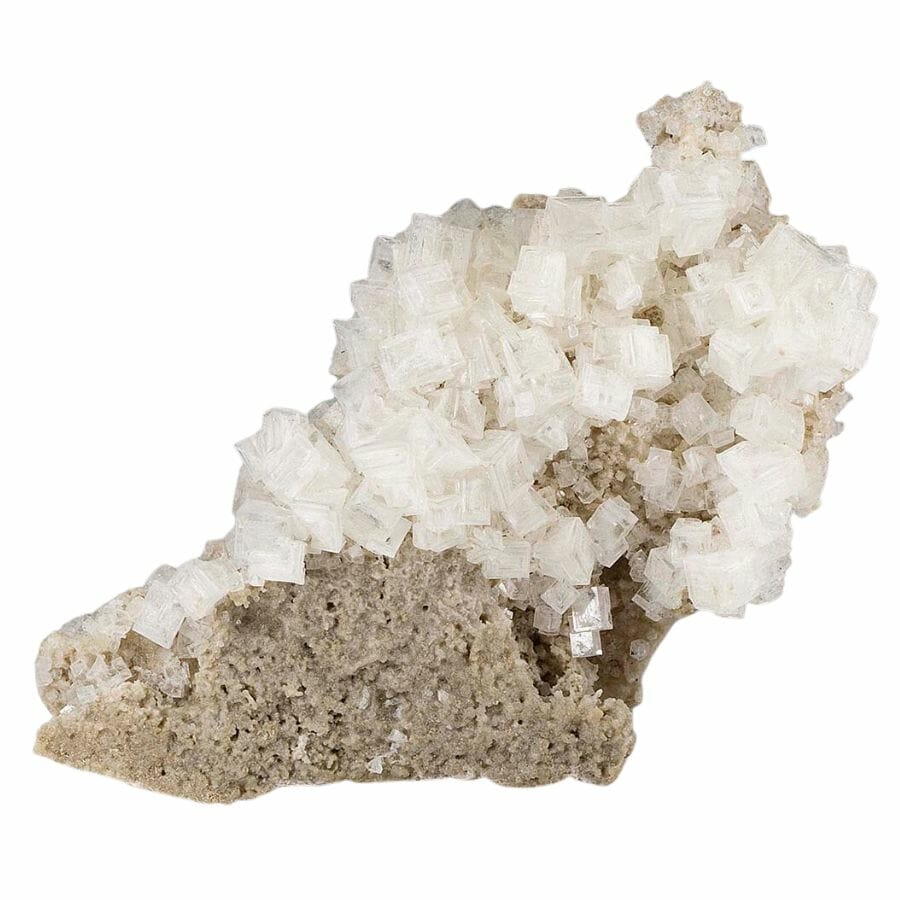
Imagine embarking on a treasure hunt to find two specific minerals: halite and calcite. The places you’d visit to find them would differ, painting a vivid picture of Earth’s diverse landscapes.
Starting with halite, you’d need to journey to places that get plenty of sun and not much rain. That’s because halite is often left behind in places with lots of evaporation.
Think of vast salt flats shimmering under the sun or saline lakes that dry up, leaving behind a crust of salt crystals.
These areas might remind you of dry, desert-like regions where water bodies have given in to the scorching sun, leaving halite deposits in their wake.
On the flip side, the hunt for calcite would take you almost everywhere. This mineral has a knack for being present in many spots around the globe. A huge clue would be limestone and marble formations. These rocks are chock-full of calcite.
If you’re into a bit of spelunking, caves would be another destination for mining for cystals. Deep inside, you’d find calcite showing off as stalactites hanging from the roof and stalagmites rising from the floor.
Price – Calcite is more expensive
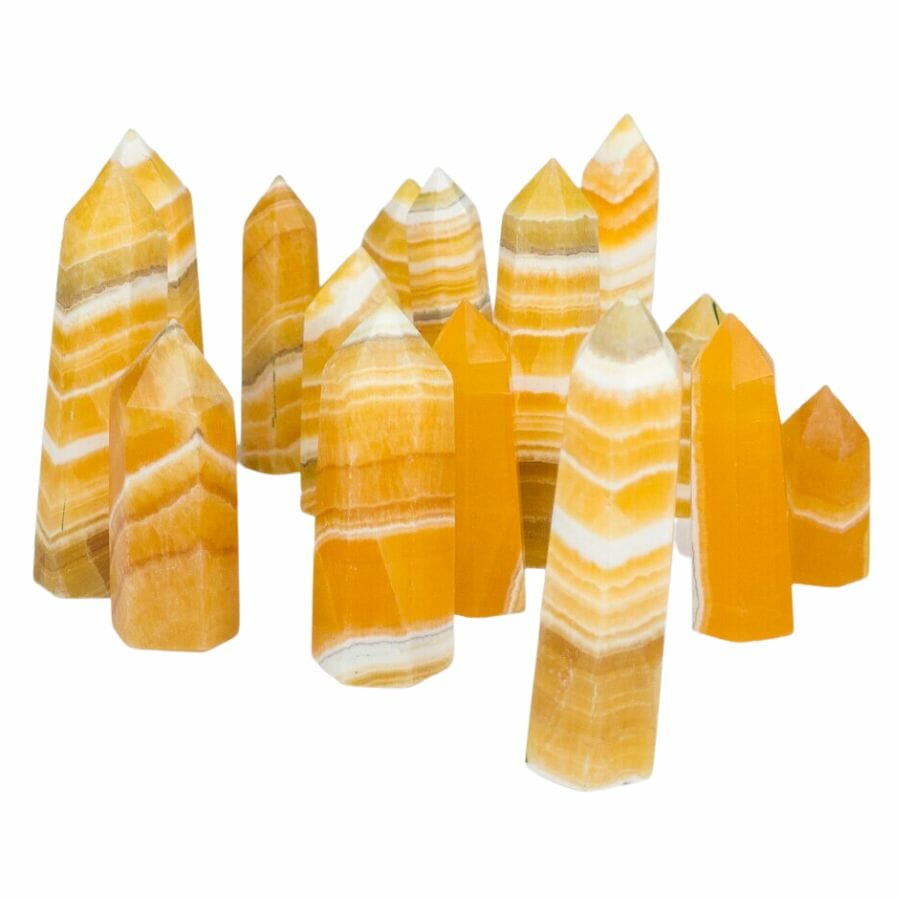
When it comes to the world of minerals, just like in any market, prices can vary based on rarity, demand, and usage. Let’s dive into the pricing world of halite and calcite.
Halite, for many, is a familiar face in the kitchen. It’s the main component of table salt. Since it’s abundant and widely used, it’s relatively cheap. Imagine going to the store and picking up a container of salt; it doesn’t break the bank.
That’s halite in its most common form. It’s a staple, and its price reflects its abundant nature and everyday use.
Now, shift gears to the value of calcite. Calcite’s pricing story is a bit more layered. This mineral can be found in various qualities and forms. Some are cloudy or have impurities, while others are clear and pristine.
These clear specimens, especially if they’re decorative, can fetch a higher price tag. If it’s a beautifully formed crystal that someone might want for a collection or as a decorative piece, it could be a bit more of an investment.
Also, some forms of calcite, used in jewelry or carvings, can vary in price based on craftsmanship and quality.
Conductivity – Halite can conduct electricity when dissolved in water
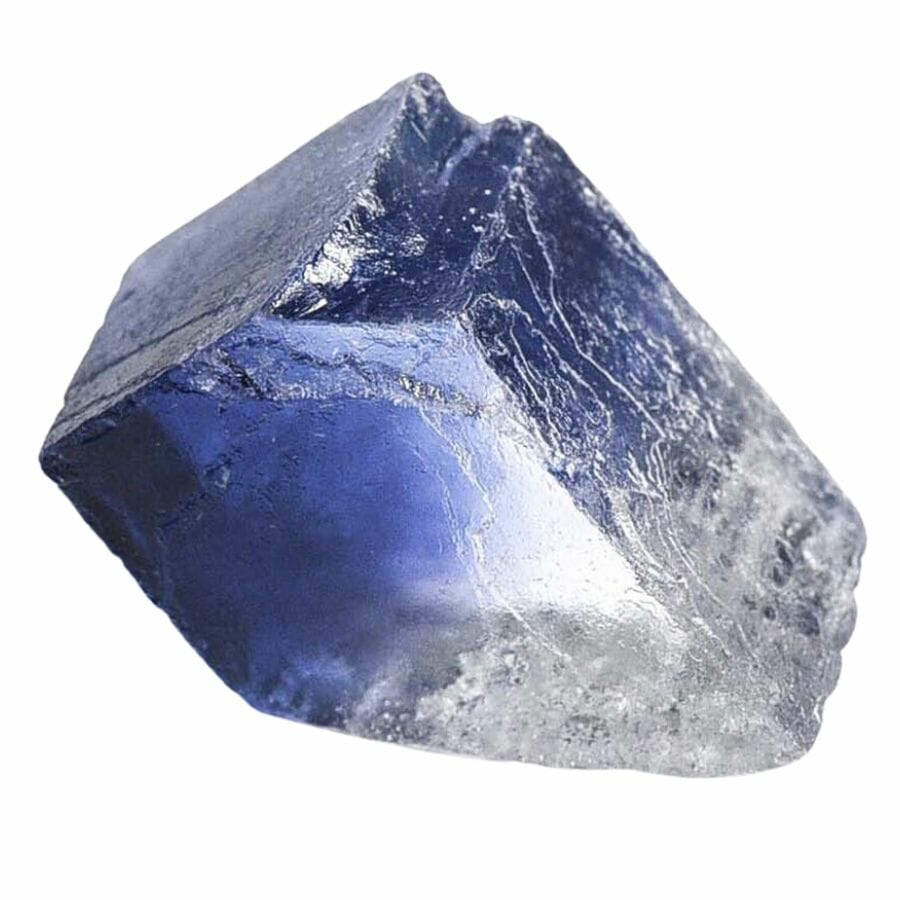
A clear difference between halite and calcite lies in their conductivity. Electricity and minerals might sound like an odd pair, but there’s a fascinating link between the two, especially when we talk about halite and calcite.
Halite has a secret power up its sleeve. On its own, it might not seem like much of a conductor, but give it some water, and it transforms.
When halite is dissolved in water, it breaks down into its ions, which are basically tiny charged particles. These ions move around in the solution and make it a playground for electricity.
As a result, the water-halite solution becomes an excellent conductor of electricity. It’s like turning on a switch that suddenly lets electricity flow smoothly.
Now, let’s chat about calcite. Calcite, in contrast, is like that quiet student in class who doesn’t make a fuss. It doesn’t have any standout electrical conductivity properties.
Even if someone tried various experiments, they’d find that calcite remains pretty neutral and doesn’t let electricity pass through it easily.
So, in the realm of conductivity, halite is the star player when teamed up with water. Calcite stays on the sidelines, not really joining the electrical game. It’s one of the many ways these two minerals show their distinct personalities.
Formation – Calcite is usually found with sedimentary rocks
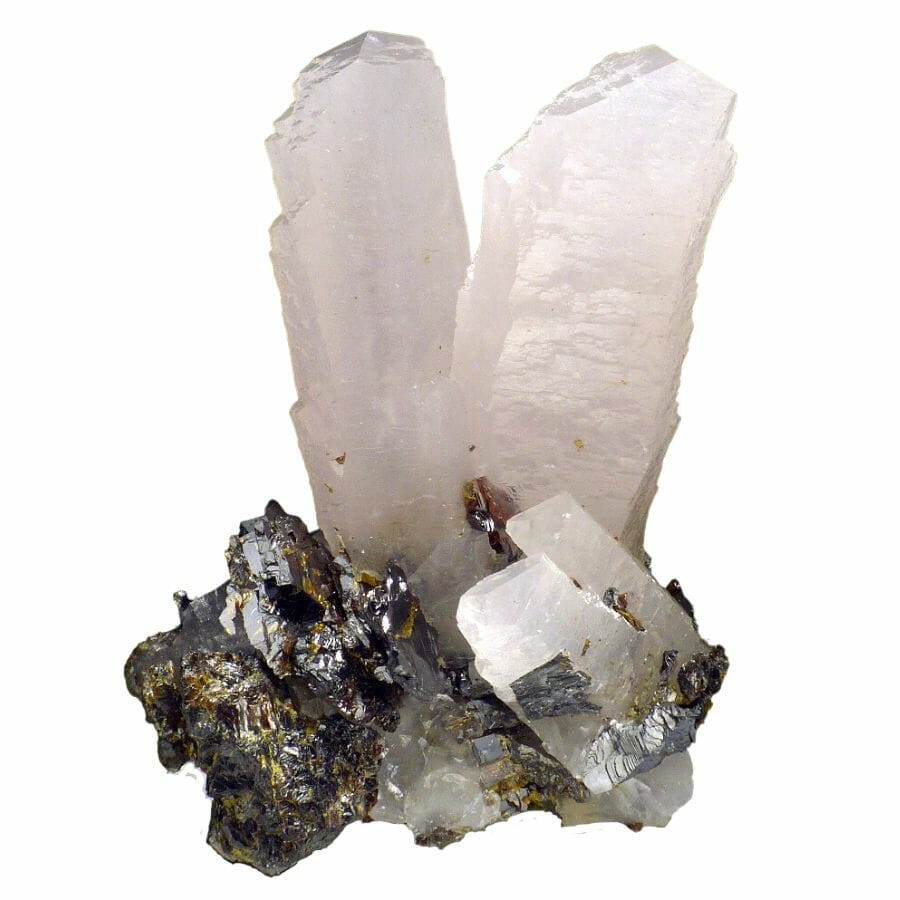
Minerals come to life in various ways, and the story of their formation can be as fascinating as the minerals themselves. It’s a bit like cooking; the ingredients and methods are different, leading to unique results every time.
Halite, for instance, has its origins in very salty waters. Imagine a puddle of saltwater left out under the hot sun. As the water evaporates, especially in dry, arid climates, the salt remains behind and starts to crystallize.
Salt springs and salt lakes are some of the best rockhounding locations because you’ll likely find a good variety of minerals there.
Over time, these crystals accumulate and grow, leading to the formation of halite. So, if someone’s ever walked by a dried-up salt lake and spotted shiny crystals on the ground, they’ve seen halite in the making.
Calcite, on the other hand, is a bit of a rock star. It’s commonly found in sedimentary rocks, which are formed from tiny bits of other rocks, plants, and animals that have been compressed over millions of years.
Limestone is a rock that’s packed with calcite. When limestone gets a bit of heat and pressure treatment deep within the Earth, it transforms into marble, another rock in which calcite is the main player.
Calcite vs Halite – The Similarities
Halite and calcite might seem different at first glance, but they have some surprising things in common. Both are minerals that you can find right here on Earth. Let’s dive into what makes these two alike!
Streak – Both minerals have a white streak
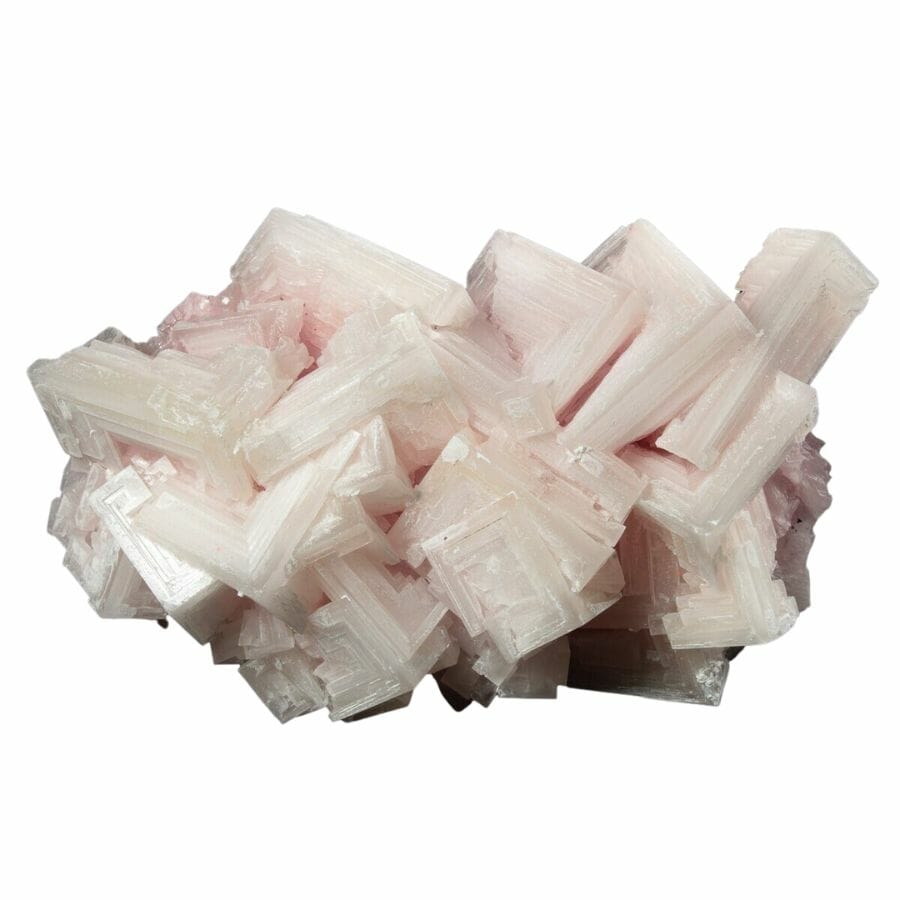
Streak is one of those neat things that mineral enthusiasts use to identify different minerals. It’s all about seeing the color a mineral leaves behind when it’s scratched against an unglazed porcelain plate.
And when it comes to halite and calcite, their streaks tell a similar story.
Both halite and calcite leave behind a white streak when tested in this manner. Imagine drawing with a piece of chalk on a blackboard; that’s the kind of mark these minerals would make.
It’s a straightforward yet powerful clue in distinguishing them from other minerals that might have a different colored streak.
This shared characteristic is especially handy because the outer appearance of minerals can sometimes be deceptive due to impurities or weathering. But the streak test remains consistent.
So, while halite and calcite have their unique properties and uses, their identical white streak is a unifying trait.
Appearance – Each mineral ranges from transparent to translucent
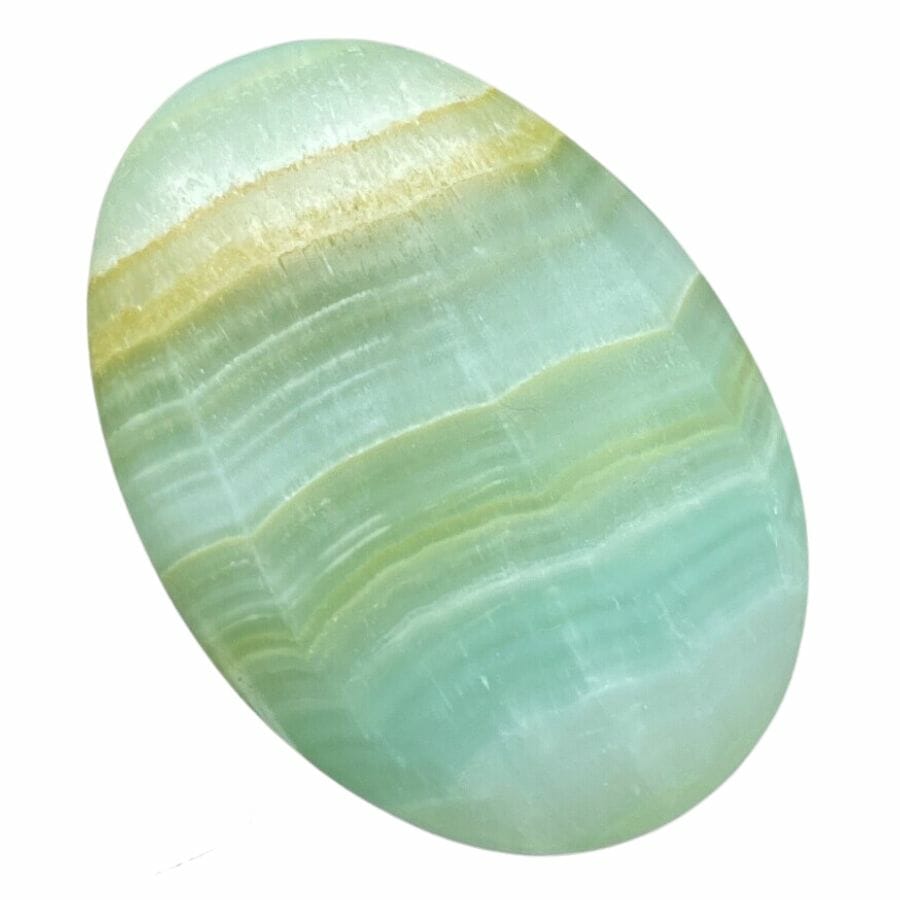
At first glance, halite and calcite can seem like twins in the mineral world. Their similarity in appearance, especially in terms of diaphaneity, can be striking, making it a fun challenge to tell them apart.
Both halite and calcite share a range in clarity from transparent to translucent. When a mineral is transparent, it means you can see right through it, just like looking through a clear window pane.
On the other hand, translucent means light can pass through, but you can’t see distinct objects on the other side, kind of like looking through frosted glass.
Imagine holding up a piece of halite and a piece of calcite to the light. Both might let the light shine through, illuminating their unique features and textures.
This shared quality means that in certain lighting conditions, both minerals can have a glowy, almost ethereal appearance.
So, while they have their differences, halite and calcite are similar in terms of clarity. And that’s what makes the world of minerals so intriguing – even those that seem so different can have shared traits that bring them together.
Density – Halite and calcite have similar densities
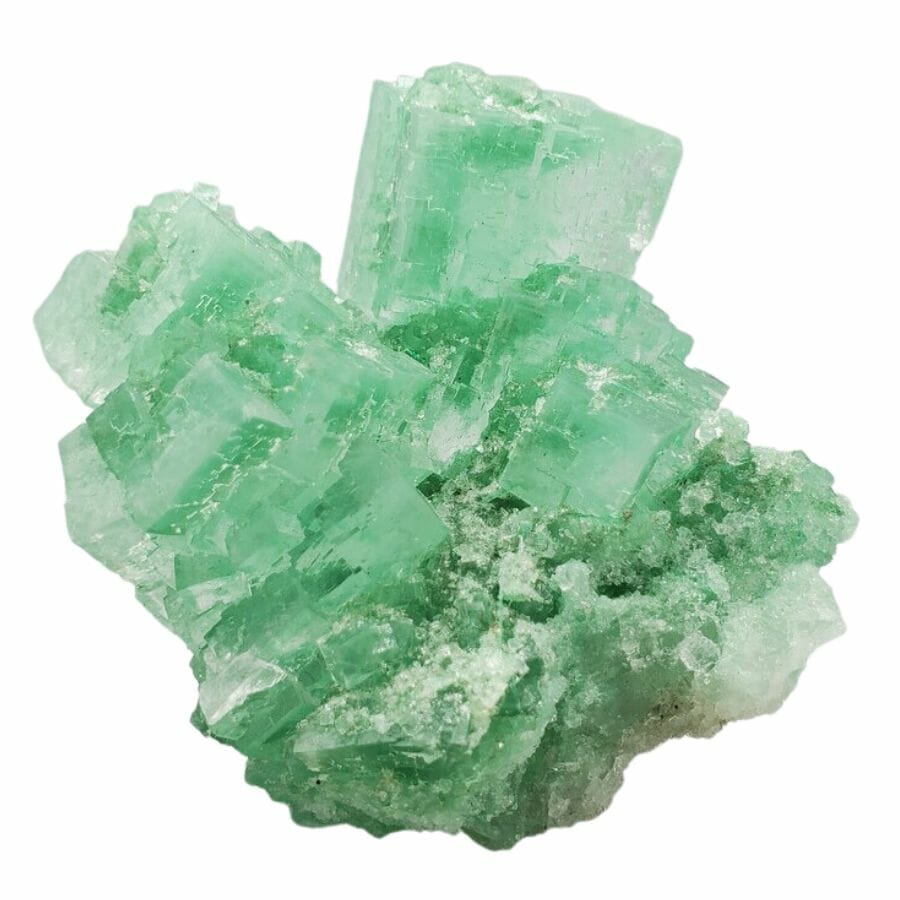
In the diverse world of minerals, density is a measure of how much matter is packed into a specific space. The densities of halite and calcite are fairly close neighbors on the scale, which makes it an interesting point of discussion.
Halite, with its density of around 2.17 g/cm³, isn’t that far off from calcite’s approximate density of 2.71 g/cm³.
Imagine two boxes of the same size: one filled with halite and the other with calcite. If you were to lift both, they’d feel somewhat similar in weight, with the calcite box being just a touch heavier.
Such similarities in density hint at how the internal structures of these minerals are arranged. While not identical, they’re packed in a somewhat comparable fashion.
It’s a bit like comparing two different types of fruit – they might not be the same in flavor or texture, but their weight or density can be quite close.
In the same way, while halite and calcite have their individual characteristics, their densities show they’re not worlds apart in the grand scheme of minerals.
Magnetism – Neither mineral is magnetic
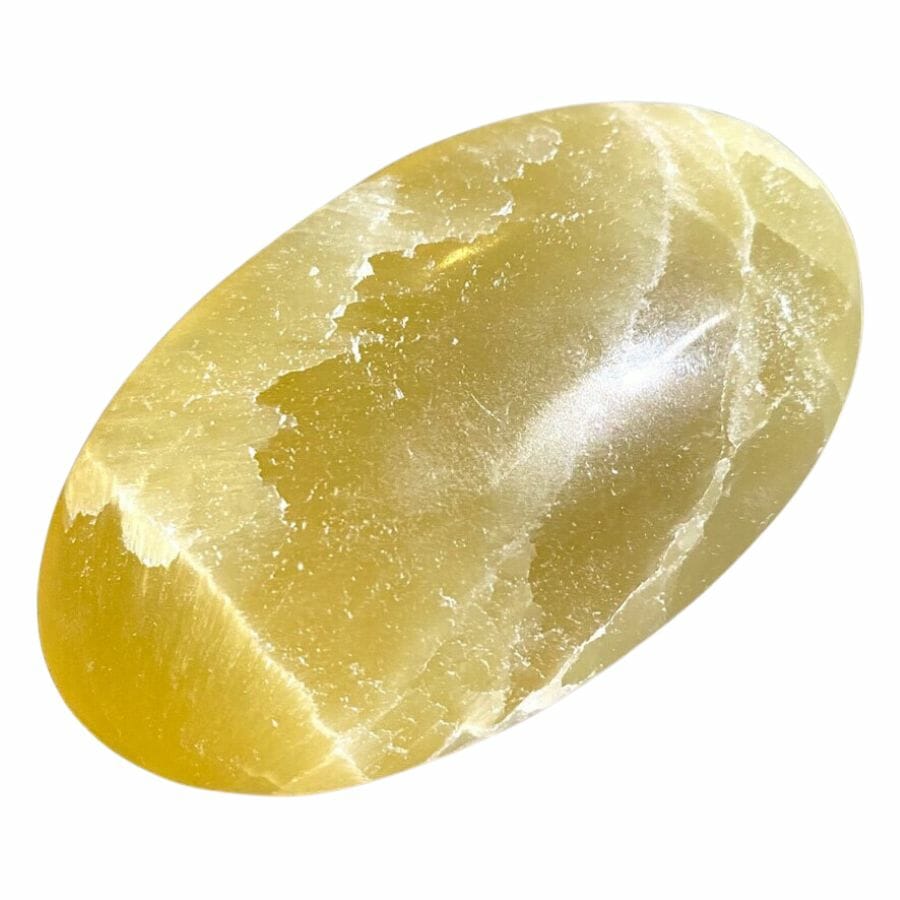
Magnetism is a force that can attract or repel certain materials, and it’s a fascinating property when it comes to minerals. Picture taking a strong magnet and hovering it over a collection of different minerals.
Some might leap up to meet the magnet, while others remain entirely unaffected. Among those that would stay put, not showing any interest in your magnet, are halite and calcite.
Both halite and calcite share the characteristic of being non-magnetic. This means if you were to bring a magnet close to them, they wouldn’t react. They’d be the calm ones in the room, unfazed by the magnetic forces at play.
The Easiest Ways to Tell Halite and Calcite Apart
Halite and calcite are two cool minerals that might look a bit alike, but they have unique features that set them apart. With a few easy tests and observations, we can tell which is which.
Look for differences in the crystal structure
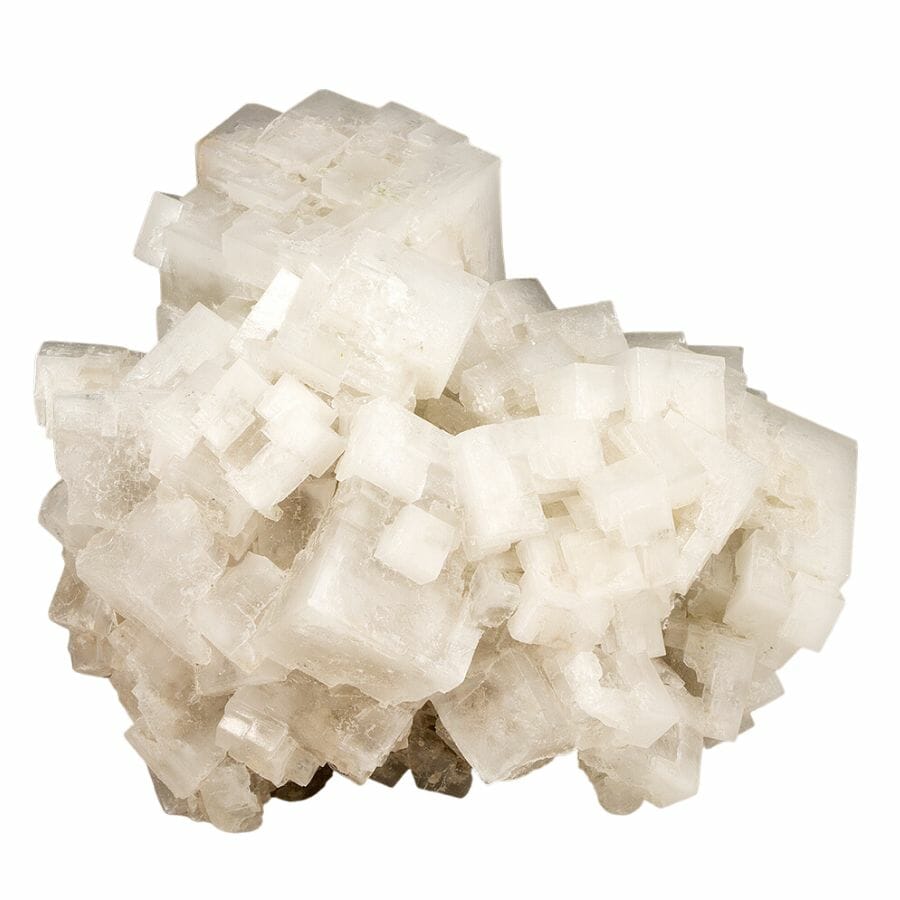
When you’re exploring the world of minerals, it’s like being a detective. Each mineral has clues that reveal its identity, and one of the coolest clues is the crystal structure.
You can tell halite vs calcite pretty easily by looking at their crystal structures.
Halite’s crystal structure tends to stand out immediately. Its love for cubes is evident, with each face of the crystal being almost equal in length, giving it that classic block-like appearance.
If you ever come across a mineral that looks like it’s made up of tiny cubes stuck together, you’re probably looking at halite.
Calcite, on the flip side, has a bit of a twist in its shape. Its crystals often form as rhombohedra, which are like slanted boxes.
Instead of the straight, even edges of the cube, imagine a box that’s been nudged on its side, creating slanted faces. That’s the typical appearance of a calcite crystal.
So, even though halite and calcite might be mistaken for each other from a distance, a closer look at their crystal structures provides the key to solving the mineral mystery.
Use a drop of vinegar
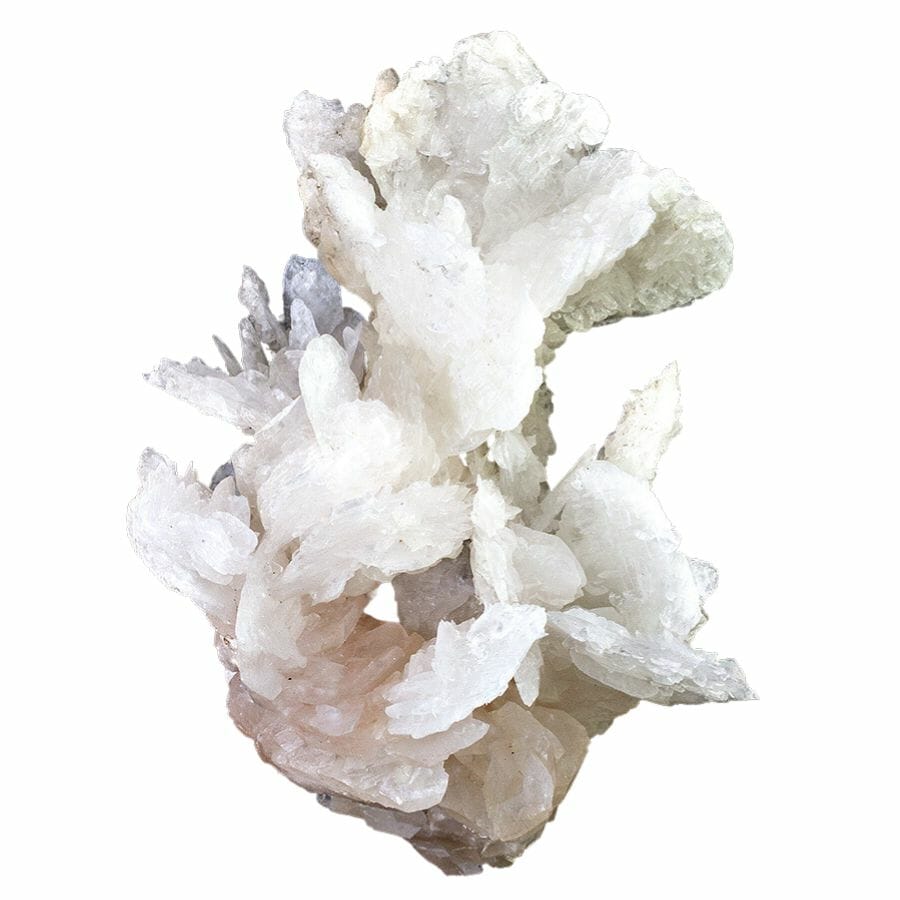
Vinegar isn’t just for salads; it can be a nifty tool for mineral enthusiasts too! Using vinegar to test minerals is like having a mini science experiment right at home.
For those wondering whether they have a piece of halite or calcite in front of them, this household liquid can offer a quick answer.
When vinegar, which contains acetic acid, comes into contact with calcite, a fun reaction occurs: it bubbles or fizzes! This is called effervescence.
This is because the acid in the vinegar reacts with the calcium carbonate in the calcite, releasing carbon dioxide gas as tiny bubbles. It’s a bit like the fizz one might see when pouring soda.
On the other side, halite just isn’t impressed by vinegar. Drop some onto it, and it’ll remain relatively calm with at most a very small, non-fizzy reaction. Halite may react with the water in the vinegar, i.e., it may partially dissolve.
You may see the reaction between the acetic acid in the vinegar and sodium chloride (salt) to produce tiny (but non-negligible) amounts of sodium acetate and hydrochloric acid.
So, using this vinegar test provides a simple way to differentiate between these two minerals. Just remember to handle everything with care, and enjoy the bubbly magic when it happens!
Find out how the mineral tastes
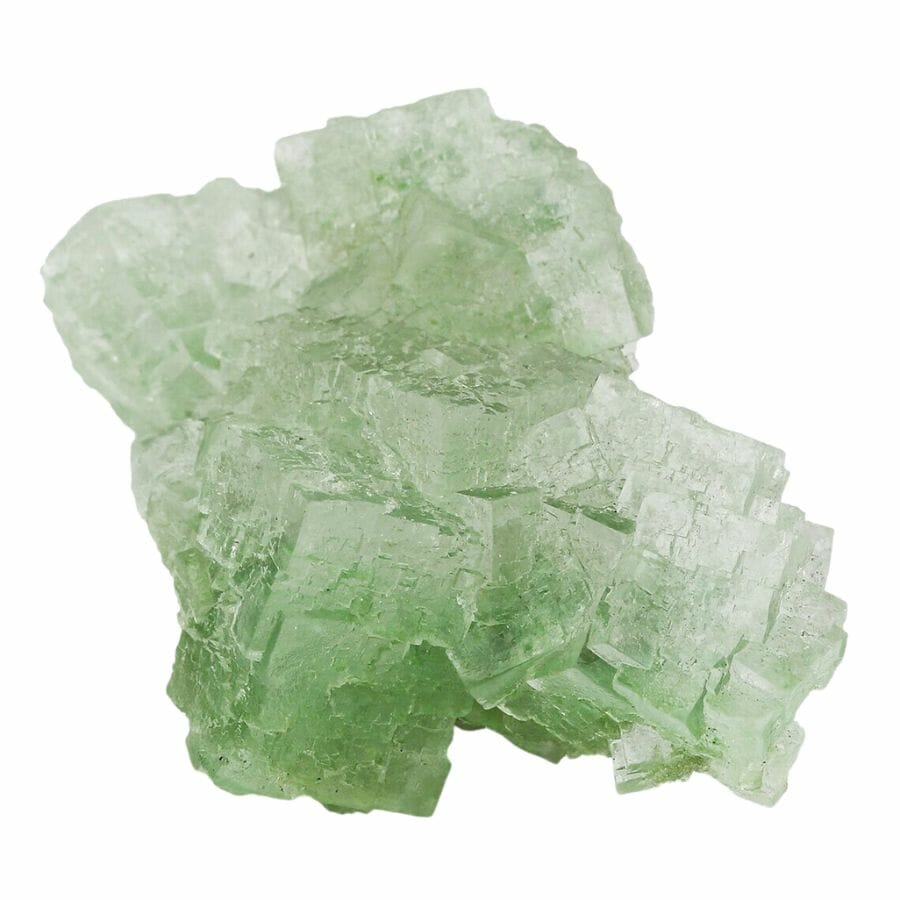
Using taste to identify minerals is a classic method, taking us back to the times when miners and geologists relied on all their senses to understand the rocks and minerals they encountered.
When trying to tell calcite vs halite, a quick taste can often be the easiest way to identify them.
Halite, the mineral name for what most people know as table salt, has that unmistakable salty flavor. Just a small touch of it to the tongue, and the familiar salty sensation gives it away instantly.
On the other hand, calcite doesn’t offer any distinct taste. It’s pretty neutral, and there’s no strong flavor to identify it by.
However, a word of caution: always make sure that any mineral sample is clean and free from contaminants before considering a taste test.
And always be sure about the identity of the mineral, because some minerals can be harmful if ingested. In this case, knowing the difference can not only satisfy curiosity but also ensure safety.

